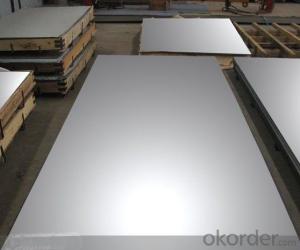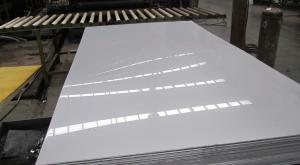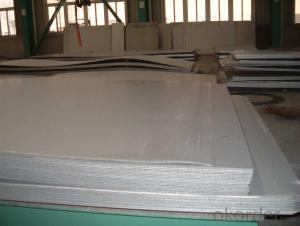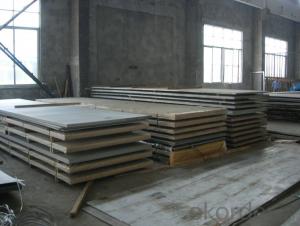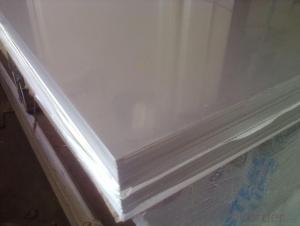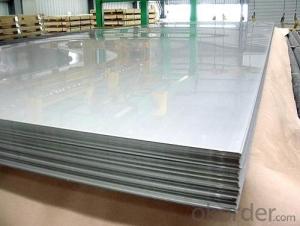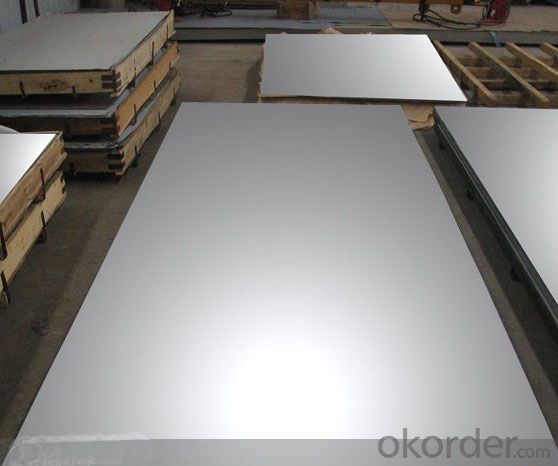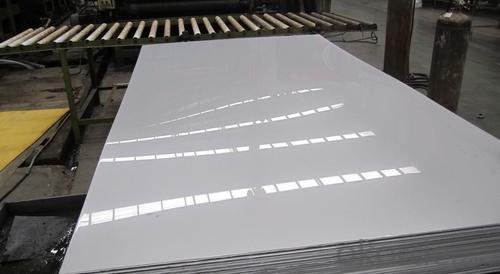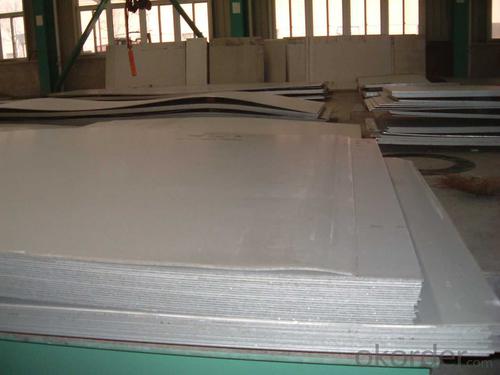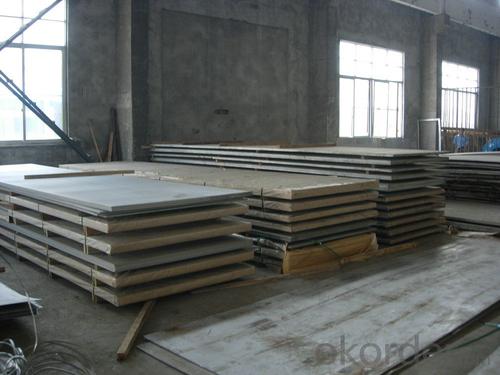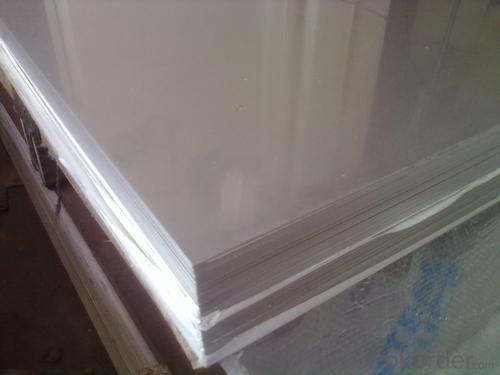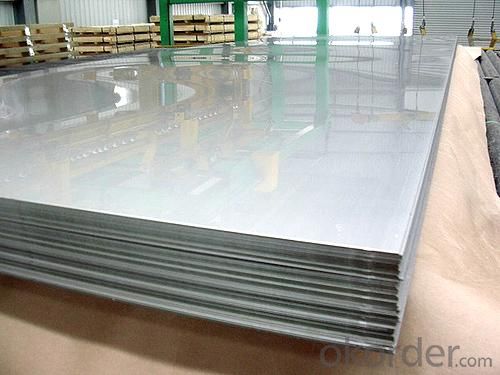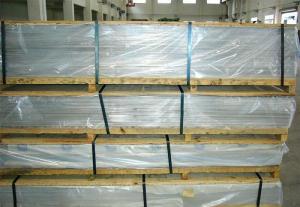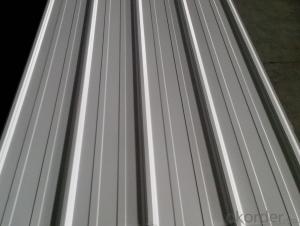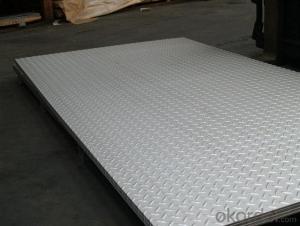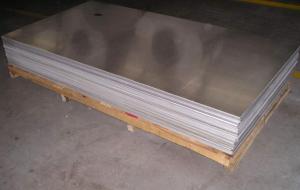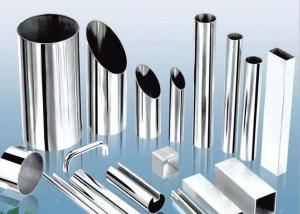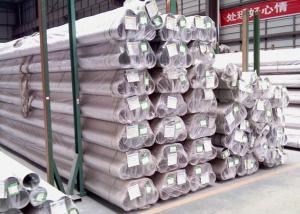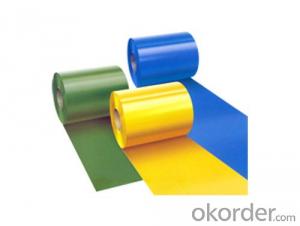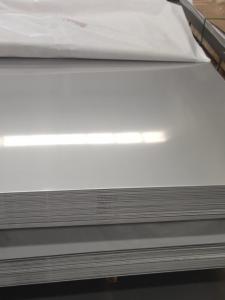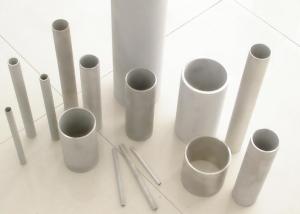Stainless Steel sheet and plate guarantee low price
- Loading Port:
- Shanghai
- Payment Terms:
- TT OR LC
- Min Order Qty:
- 10000 m.t.
- Supply Capability:
- 5000000 m.t./month
OKorder Service Pledge
OKorder Financial Service
You Might Also Like
Specifications of stainless steel
304 stainless Steel Plate
stainless steel plate,steel sheet,steel plate
Standard: ASTM,GB,DIN,JIS,ISO,EN,etc.
TISCO stainless Steel Plate 304/NO.1 finished
stainless steel plate,steel sheet,steel plate
Standard: ASTM,GB,DIN,JIS,ISO,EN,etc.
Delivery short and low cost advantage.
Description of stainless steel:
stainless steel plate,hot rolled stainless steel plate,cold rolled stainless steel plate,stainless steel sheet,steel sheet,sheet
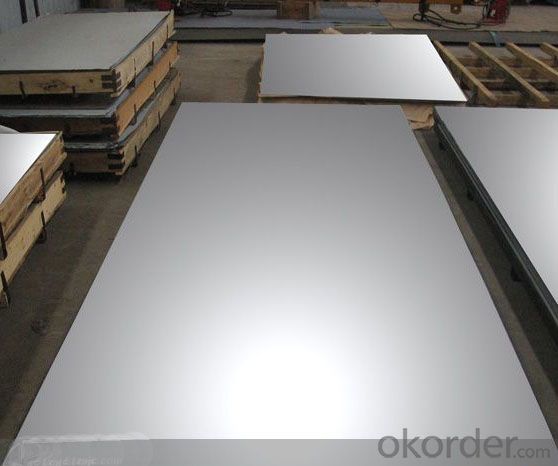
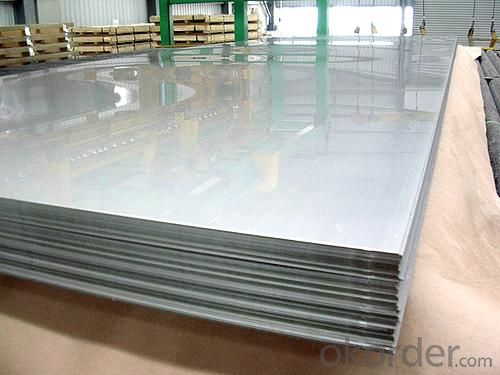
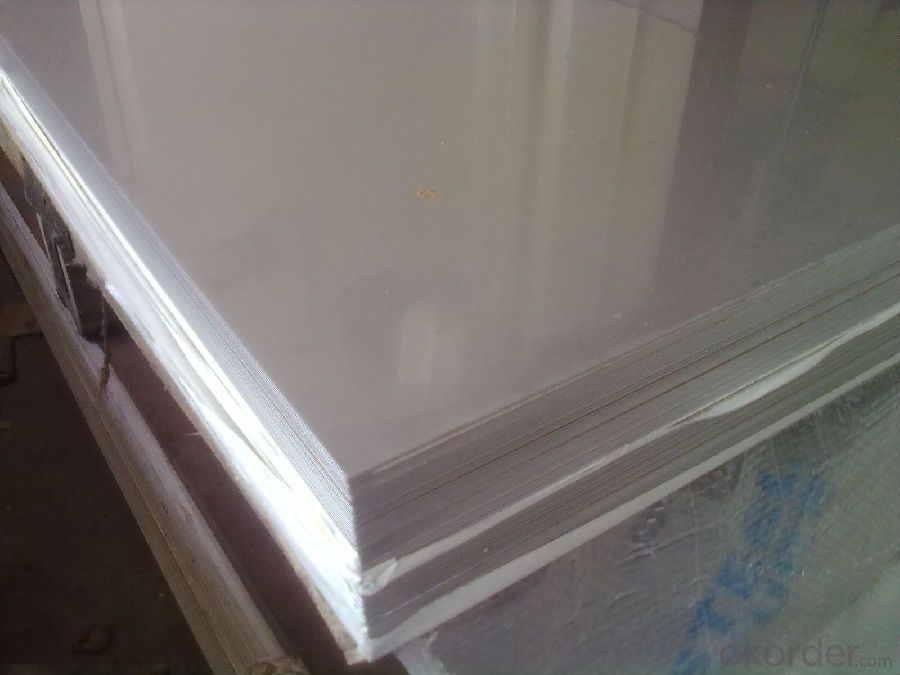
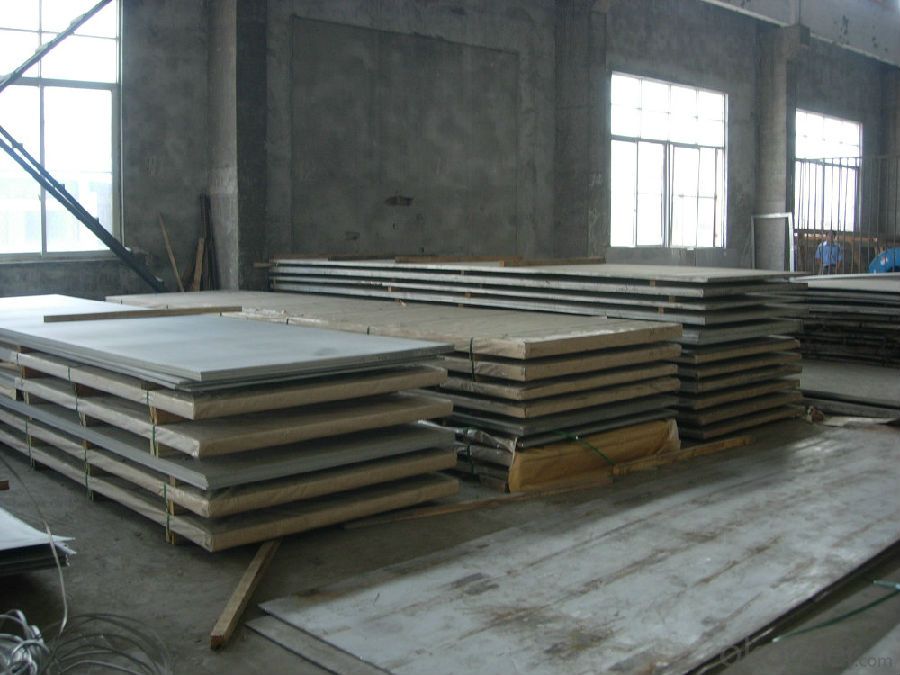
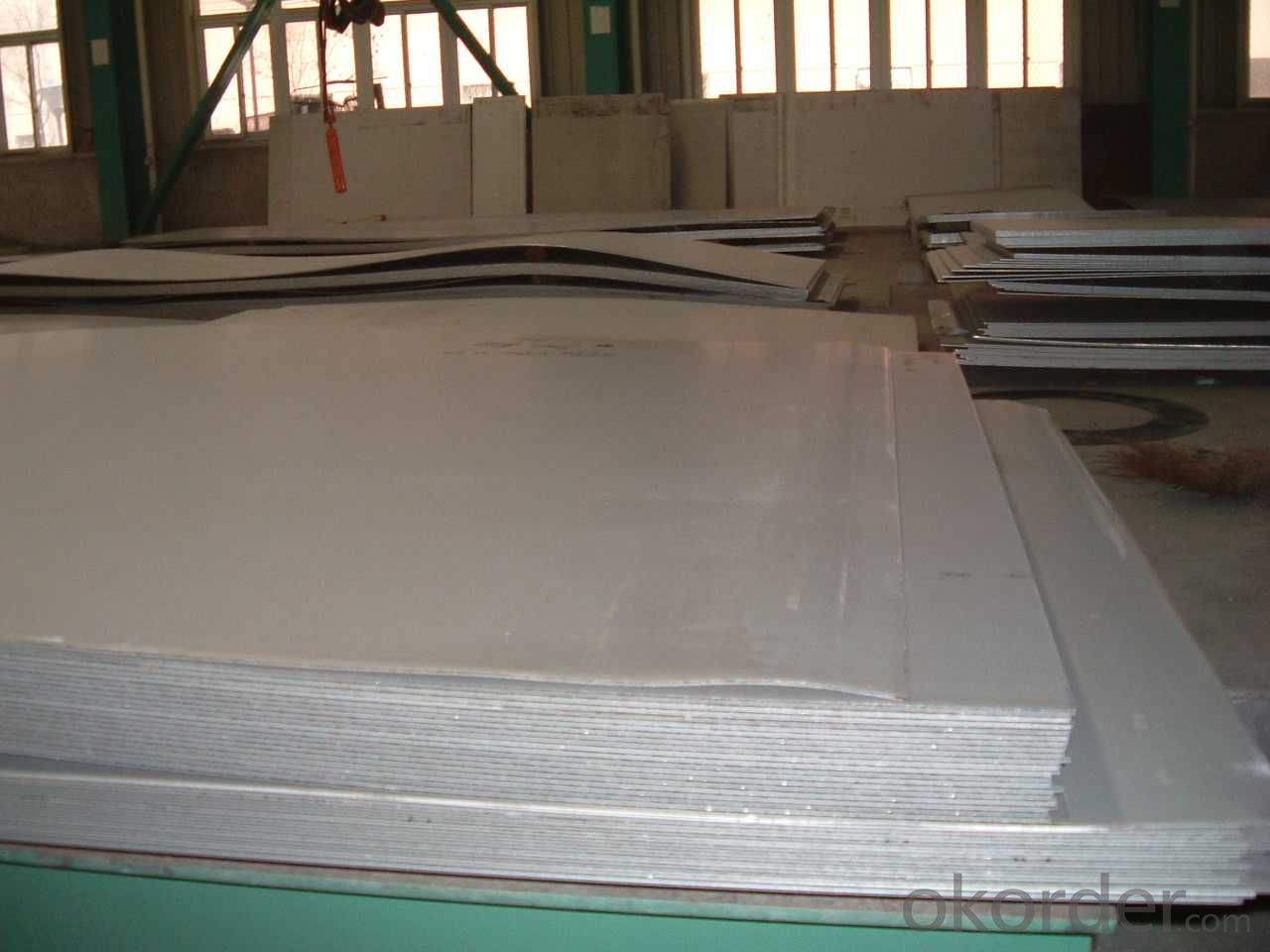
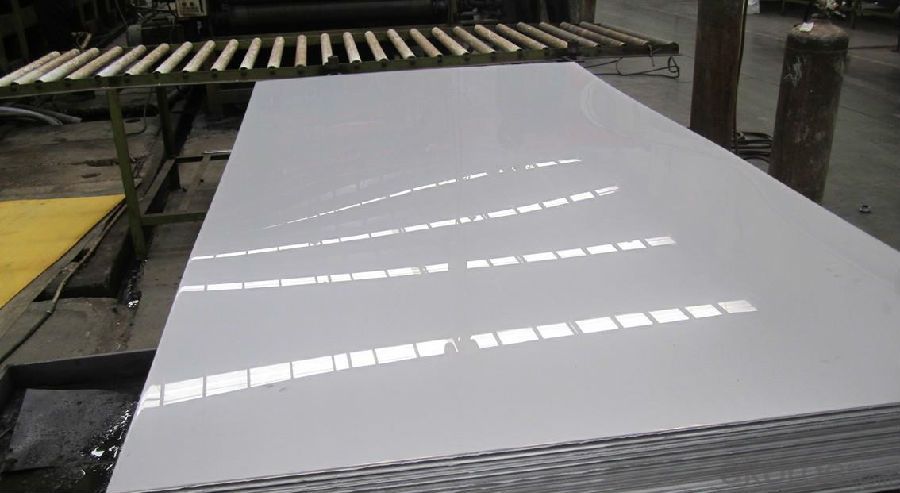
Material of stainless steel:
304,304L,309S,310S,316,316L,316Ti,317L,317L,321,347H,409,409L,410S,420,430,201,202,etc.
Thickness of stainless steel:
From 0.3mm to 100mm
Width of stainless steel:
1000mm,1219mm,1250mm,1500mm,1800mm,2200mm,2500mm or as your requirement
Length of stainless steel:
2000mm,2438mm,2500mm,6000mm,6096mm or as your requirement
Application of stainless steel:
Stainless steel plate applies to construction field, ships building industry, petroleum & chemical industries, war and electricity industries, food processing and medical industry, boiler heat exchanger, machinery and hardware fields. Our company has cooperative relation between the domestic agents. Stainless steel plate can be made accordingto the customers requirements. Fasten delivery. Quality assured.Welcome to order more.
Contacts
If you have any question,please feel free to contact us.
- Q: How do you remove adhesive from stainless steel sheets?
- One effective way to remove adhesive from stainless steel sheets is by applying a small amount of rubbing alcohol or acetone to a soft cloth and gently rubbing the adhesive residue. Another option is to use a mixture of warm water and mild soap, followed by scrubbing with a non-abrasive sponge or cloth. If the adhesive is particularly stubborn, using a commercial adhesive remover specifically designed for stainless steel can also be effective.
- Q: Are stainless steel sheets good for exhaust systems?
- Yes, stainless steel sheets are highly suitable for exhaust systems due to their exceptional heat resistance, durability, and corrosion resistance properties. Additionally, stainless steel sheets offer high strength and are able to withstand extreme temperatures and harsh environments, making them an ideal choice for exhaust systems that are exposed to heat, moisture, and chemicals.
- Q: Can stainless steel sheets be used in food processing?
- Food processing can make use of stainless steel sheets. They are commonly chosen in the food industry because of their advantageous properties. One crucial property is their resistance to corrosion, which is highly important in food processing environments where contact with water, chemicals, and food is frequent. Stainless steel sheets are also non-reactive, meaning they do not interact with food or impact its taste, thus making them a safe option for food processing equipment. Moreover, stainless steel is easy to clean and maintain, making it ideal for maintaining the high levels of hygiene required in food processing facilities. Its durability and strength ensure that it can withstand the demanding nature of food processing operations. Overall, stainless steel sheets are the preferred choice in the food industry for their suitability in food processing applications.
- Q: Can stainless steel sheets be bent or formed without cracking?
- Yes, stainless steel sheets can be bent or formed without cracking. Stainless steel is known for its excellent formability and ductility, which allows it to be easily bent, shaped, or formed into various configurations. However, the extent to which stainless steel can be bent without cracking depends on several factors, including the grade and thickness of the stainless steel, the type of bending or forming process used, and the equipment and techniques employed. It is important to use proper bending techniques, such as using appropriate bending tools, applying gradual and consistent pressure, and avoiding excessive force or sharp bends, to prevent cracking. Additionally, preheating or annealing the stainless steel sheets can also improve their formability and reduce the risk of cracking during bending or forming operations.
- Q: Are stainless steel sheets resistant to staining from food?
- Yes, stainless steel sheets are highly resistant to staining from food. Stainless steel is known for its excellent corrosion resistance and non-reactivity with various substances, including food. It is a popular choice for kitchen appliances and cookware due to its ability to withstand prolonged exposure to food without staining or reacting chemically. Stainless steel sheets are also easy to clean, making them ideal for food preparation areas where cleanliness is essential. Additionally, the smooth and non-porous surface of stainless steel sheets prevents the absorption of food particles and liquids, reducing the risk of staining. Overall, stainless steel sheets provide a durable and stain-resistant option for food-related applications.
- Q: How do stainless steel sheets compare to other materials, such as aluminum or carbon steel?
- Stainless steel sheets offer distinct advantages when compared to other materials like aluminum or carbon steel. They have superior corrosion resistance, making them ideal for applications in harsh environments or industries like food processing. Stainless steel sheets also possess high heat resistance, strength, and durability, making them suitable for various structural and industrial purposes. While aluminum is lightweight and has good conductivity, it lacks the same level of strength and corrosion resistance. Carbon steel, on the other hand, is strong but more susceptible to corrosion. Overall, stainless steel sheets provide a balance of strength, durability, and corrosion resistance, making them a preferred choice in many industries.
- Q: Are stainless steel sheets suitable for food packaging equipment?
- Food packaging equipment can greatly benefit from the use of stainless steel sheets. The food industry favors stainless steel because of its many advantageous features. First and foremost, stainless steel is non-reactive, meaning it does not interact with food or alter its taste, smell, or appearance. As a result, it is safe for direct contact with food products. Furthermore, stainless steel is resistant to corrosion, rust, and staining, ensuring the equipment's durability and longevity. Cleaning and sanitizing stainless steel is also a breeze, making it perfect for maintaining the high levels of hygiene required in food packaging processes. The smooth surface of stainless steel sheets minimizes the risk of bacterial growth and simplifies the cleaning process even further. Moreover, stainless steel possesses excellent strength and heat resistance properties, allowing it to withstand high temperatures without losing its shape or structural integrity. This is especially crucial in food packaging equipment that involves heat sealing or thermal processing. To sum up, stainless steel sheets are an excellent choice for food packaging equipment due to their non-reactive nature, resistance to corrosion, ease of cleaning, and high strength. These qualities ensure both the safety and quality of food products during packaging processes, making stainless steel a reliable and hygienic option.
- Q: What is the stainless steel grid board? What areas of stainless steel mesh panels are used in?
- Lattice plate of stainless steel steel has strong corrosion resistance, anti-corrosion effect was significantly higher than that of hot dip galvanized steel plate, but the cost is higher, stainless steel grid board is widely used in municipal, environmental protection, steel structure, boiler, desulfurization and denitrification projects, procurement of stainless steel grid plate, Changzhou Gemeirui steel grid plate.
- Q: How do I prevent stress corrosion cracking on stainless steel sheets?
- To prevent stress corrosion cracking on stainless steel sheets, there are various steps that can be taken: 1. Opt for the appropriate stainless steel grade: Select a stainless steel grade that is resistant to stress corrosion cracking (SCC). Although grades like 304 and 316 generally have good SCC resistance, certain applications may necessitate higher alloyed grades like duplex or super duplex stainless steels. 2. Minimize exposure to corrosive environments: Limit the exposure of stainless steel sheets to environments known to cause stress corrosion cracking, such as chloride-rich or acidic surroundings. If avoiding exposure is not possible, consider applying protective coatings or barriers to shield the stainless steel from these corrosive elements. 3. Manage applied stress levels: Prevent subjecting the stainless steel sheets to excessive mechanical or thermal stresses. High tensile stresses can facilitate the initiation and propagation of stress corrosion cracking. Utilize appropriate design and fabrication techniques to ensure even stress distribution and minimize stress concentrations. 4. Maintain the surface condition: Ensure that the stainless steel sheets are devoid of surface contamination or defects that can serve as initiation sites for stress corrosion cracking. Regularly clean and inspect the sheets to eliminate any contaminants or corrosion products. 5. Employ inhibitors or cathodic protection: In certain cases where exposure to corrosive environments is unavoidable, the use of corrosion inhibitors or the implementation of cathodic protection techniques can help mitigate stress corrosion cracking. These methods work by reducing the corrosive activity on the stainless steel surface. 6. Handle and store properly: Exercise caution during transportation and storage to prevent excessive bending, vibration, or exposure to corrosive substances. Store stainless steel sheets in a clean and dry environment to avoid potential surface contamination. In conclusion, a combination of material selection, environmental control, stress management, surface maintenance, and proper handling can effectively prevent stress corrosion cracking on stainless steel sheets. It is advisable to consult with material experts or engineers to analyze specific application requirements and recommend the most appropriate preventive measures.
- Q: What is the tensile modulus of stainless steel sheets?
- The grade and specific composition of stainless steel sheets determine the variation in their tensile modulus. Nevertheless, stainless steel is widely recognized for its remarkable mechanical properties and high tensile strength. Typically, the tensile modulus of stainless steel sheets falls within the range of 180 to 200 GPa (Gigapascals), surpassing the majority of commonly utilized engineering and construction materials. This exceptional tensile modulus renders stainless steel sheets perfect for applications demanding robustness, longevity, and resistance against corrosion.
Send your message to us
Stainless Steel sheet and plate guarantee low price
- Loading Port:
- Shanghai
- Payment Terms:
- TT OR LC
- Min Order Qty:
- 10000 m.t.
- Supply Capability:
- 5000000 m.t./month
OKorder Service Pledge
OKorder Financial Service
Similar products
Hot products
Hot Searches
Related keywords
